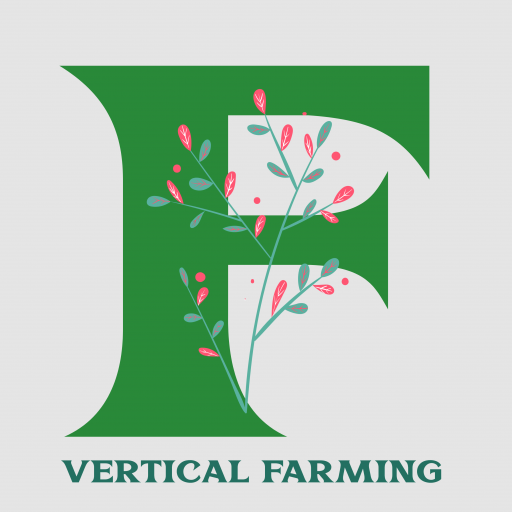Is Organic Hydroponics the new way?
#.Organic Hydroponics
How can plants grow without soil? We always see plants in gardens or fields growing in soil. To think that they can be grown without soil seems extraordinary to us. But it happens with the advent of hydroponics. Getting to know about hydroponics is not easy as it is a relatively modern agricultural technique. For those of us who have lived believing that plants must be grown in soil, hydroponics utilizes an entirely different growth medium. Hydroponics is a type of horticulture that uses nutrients, water, and a special kind of growing media rather than soil.
This means you must first learn this technique before trying to cultivate plants with it.
#.Organic Hydroponics

The growing of plants without the need for soil is known as hydroponics. Herbs, flowers, vegetables, and hydroponic indoor plants are grown through this method by giving nutrient-rich solutions, water, and oxygen in inert growing media. This method promotes high quality, stronger yields, and rapid growth. When plants are grown in soil, their roots are constantly looking for nutrients to support their system. When the root system of a plant is immediately exposed to nutrition and water, the plant does not need to expend any energy to survive. The energy used by the roots to obtain water and food can be diverted to the plant’s growth. Thus, leaf growth, as well as flower blooming and fruit yield improves.
While hydroponics has only lately been used on a big scale in modern agriculture, plants grown without soil are not a new concept. One of the seven wonders of the world, The Babylonian Hanging Gardens may be considered one of the earliest hydroponics examples. Water gardening was also used when ancient cultures and civilizations grew along the River Nile, according to Egyptian hieroglyphics. The Aztecs of Mexico used hydroponics in their floating gardens. Farmers directed the roots to crawl under the raft, allowing them to get nutrients from the lake which would otherwise be unavailable.
There are three elements involved in the working of a hydroponic system. First, growing media which is inert. Inert growing media hold the root’s structure and plant weight. A plant growing in a hydroponic system never dries out and retains as much moisture as it needs. The growing media’s composition is determined by the type of plant you’re cultivating in your hydroponic system. Certain plants grown have an alkaline pH, while others have an acidic pH with added nutrients to help the plants produce more and faster yields. Second, pumps and air stones are utilized to aerate plants and prevent them from drowning or becoming damaged because of extended contact with nutrients and water. The air stones work by releasing dissolved oxygen bubbles into the growing media, ensuring that the plants have adequate oxygen in the water to thrive effectively. The air pumps help in generating oxygen. Lastly, net pots are the mesh pitchers that keep your hydroponic plants from floating away. Because they are made of mesh, the roots of the plants can emerge out of the side, ensuring faster and more consistent growth. Because the roots are exposed straight from the mesh material, they can take the most nutrients and oxygen from the growing medium.
The hydroponic system operates by offering precise control of environmental parameters such as pH balance and temperature, as well as increased water and nutrient exposure. Hydroponics works on the basic premise of giving plants just what they need, and whenever they need it. Hydroponics uses nutrient solutions which contain specifically the minerals for the plant under cultivation needs. They let you easily control the flow of light depending upon the needs of the plant. The pH of the water can be measured and changed. Plant growth is accelerated in a highly customized and safe environment. You can assess how a certain plant lacks nutrients and minerals which you can provide at that particular time. The working of the hydroponic system depends on its type as some types use a plastic trough, net pots, air pumps, and air stones for the plants to access nutrients and minerals from the growing medium.
Numerous risk factors are minimized by regulating the plant’s environment. Plants grown in fields and gardens are exposed to a variety of stressors that have a detrimental effect on their growth and development. Pathogens can be propagated by fungi in the soil. Rabbits, for example, can raid your garden for ripening veggies. Insects such as locusts can damage crops in the evening. The uncertainty of growing plants and crops on earth and outside is eliminated by adopting hydroponic systems. Seedlings can grow more quickly without the mechanical barrier of the soil. Hydroponics produces more nutritious and good quality vegetables and fruits by removing pesticides. Plants are free to develop quickly and strongly when there are no barriers in their way.
There are different types of hydroponic systems. The deepwater culture hydroponic system is the first and most popular form. Plants are suspended in aerated water. As a beginner, this method is considered best, to begin with as it is simple and economical. Net pots are used to design this system as the roots and plants are exposed to aerated water while intact. The roots of a plant are deeply submerged in water getting the nutrients directly. In wick systems, the plants are packed together on a tray and subsequently set over the top of a water reservoir. The reservoir is filled with water that contains all the necessary nutrients. Nutrients and water flow all up the wick into the tray allowing your plants to grow easily.
Vertical hydroponic gardening is the farming practice of growing crops in layers that are piled vertically. As the name implies, vertical hydroponics is a blend of vertical farming and hydroponics. So, with a vertical hydroponics system, there will be numerous stacked layers with plants growing on each one. Because of its compact design, it saves space, can be easily maintained and there is less wastage of nutrients.
The Nutrient Film Technology allows the plant to adhere to a nutrient solution flowing continuously. These come into contact with the root system of the plant, allowing for efficient moisture and nutrition transport for the rapid growth of plants. An air pump and air stone are used to aerate the water regularly in the nutrient solution or reservoir. The drip hydroponic system is last on the list. This requires a complex tubing system in which the plants are supplied through reservoirs with a nutrient-rich fluid. To increase plant growth, this nutrient-rich solution is gradually and carefully dripped into the growing media of the root system.
People are becoming increasingly interested in hydroponic farming at home because of its advantages; the most important of which is that it enables them to grow a high yield of crops all year round. It can be fruits, vegetables, or hydroponic indoor plants like peppers, tomatoes, cucumbers, celery, etc. You can also set up a hydroponic system at home. You will just need a basic light source or sunlight to grow plants, a nutrient-rich water solution, and a growing medium for its working. Building a hydroponic system at home doesn’t cost you much if you buy a simple kit to start with. Moreover, there are several DIY methods on different online websites to save money.
With the advance in science, hydroponics has served humanity with many benefits. It has increased the crop yield. Therefore, Food and Agriculture Organization (FAO) has suggested implementing hydroponic farming in countries facing food shortages to increase food yield and feed people. Hydroponic crops grow around twenty percent faster than soil crops. Another advantage of hydroponics is you have full control over the environment of the plants which restricts the damage which can be caused to them in the field. As the name suggests, with hydroponics less water will be consumed while growing crops. You can set up a hydroponic system anywhere whether in a greenhouse, your house, or indoor space. Hydroponic farming allows continuous crop production. You don’t have to worry about weather changes.
There are some drawbacks to hydroponics as well such as the system being vulnerable since everything is intricately designed so if anything is installed incorrectly or fails, the entire system collapses. It has certain negative environmental impacts as the use of plastic in pumps or pipes is hazardous to the atmosphere. A more complex hydroponic system requires more money making it less economical sometimes.
There might be some problems with hydroponics but with the natural resources depleting every day at a fast rate, increased pollution, and global warming, feeding the people have become a major problem. Thus, to increase food productivity hydroponics can be considered an option. You don’t have to build an expensive and complicated hydroponic system; you can start with building an easy and simple hydroponic system at home. Regardless of the one you choose, if you properly care for your plants, they will grow rapidly. Even if you’re having problems, you will be able to fix them and get your crops back on track because of hydroponics’ incredible versatility.


